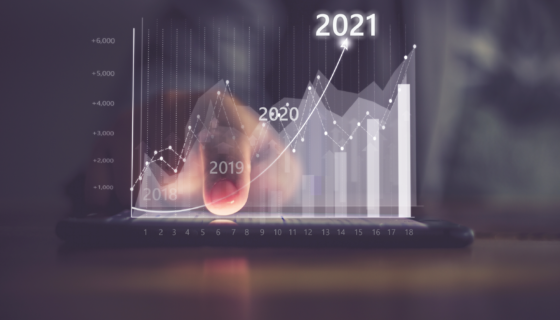The Secret to Longevity? The Answer May Inspire You.

In a year like 2020, it is likely we have become professional reactors. Between COVID-19 and the uncertainties of the election, leaders and managers have jumped from fire to fire, putting out the blaze that has been this year. In response to that level of crisis management, organizations large and small have now learned the true meaning behind being lean and agile. However, despite these skills, we must not forget to learn from the cards that were dealt to us in 2020. The goal in any organization should be to learn to move beyond being reactionary and agile, and into being anticipatory and proactive.
The reasoning behind encouraging companies to become Anticipatory Organizations is that even after this pandemic ends and we move into the future, digital disruptions will continue to transform all industries, and those same feelings of uncertainty that we all faced in 2020 will resurface in new ways. Wouldn't you like to be in front of them this time?
Anticipation Is the New Competency
To thrive in both the post-pandemic "new normal" and the future of digital disruptions and growing uncertainty, we must learn how to accurately anticipate the future--a new competency for many. That may seem unrealistic, as if I am encouraging you to learn how to predict the future, but it is not. The future is there for you to see when you know where and how to look for it.
This skillset is one of anticipation, where a leader or entire organization pays attention to Hard Trends--or future certainties that they know will happen and cannot be changed--and uses them to pre-solve problems those certainties are bringing their way. Hard Trends are based on measurable, tangible, and fully predictable facts, events, or objects.
Conversely, I have developed a way of separating those Hard Trends from their counterparts known as Soft Trends. Soft Trends are future maybes that are open to influence, allowing a leader or organization to transform their future.
Understanding and analyzing the differences between Hard Trends and Soft Trends allows us to know which parts of the future we can be right about, making that aforementioned competency seem less like fortune-telling and more like preparation for what is to come.
Linear and Cyclical Changes
Employees of an Anticipatory Organization also realize that in addition to analyzing trends, there are ways to differentiate between types of change as well. There are two types of change that occur in the world: linear change and cyclical change.
Linear change happens once and transforms products, services, or entire industries, such as what we saw with the Internet boom of the late nineties and other forms of digital disruption. Cyclical change is one that occurs in a cycle, such as the seasons we go through every year, the election in the United States happening every four years, and even that the sun will rise in the east tomorrow.
Understanding these two types of changes is an integral part of being an Anticipatory Organization going forward, especially after this pandemic. COVID-19 was a linear change; it transformed the way we do business and, in some ways, accelerated other transformations that were likely headed our way regardless of the economic shutdown we faced early on in the year.
Cyclical changes allow us to accurately foresee problems years before they happen. Not only did this year bring a linear change like COVID-19, we already knew the election was happening, which often brings with it its own level of disruptions. Now in four more years, another election will happen, so what will Anticipatory Organizations do to prepare for what may change during that one?
Likewise, while we can't predict when linear changes may happen as easily as cyclical changes, we should have learned from them and know how to identify one and anticipate what problems may come with them.
Science of Certainty
Separating Hard Trends from Soft Trends and understanding both linear and cyclical change allows you to accurately define certainties going forward.
In reference to cloud computing, we know that is a linear change that has transformed how we do business both before and after COVID-19, and we can be certain that we are not going to discontinue using cloud computing, especially with the increase in connectivity with 5G.
So why is this so important to businesses, especially after a year like we have experienced? The answer is simple: strategy based on certainty has low risk, while strategy based on uncertainty has high risk. Wouldn't it be nice to have the competitive advantage in the event something as profound as a global pandemic and a nationwide lockdown happens again?
To succeed in business in the coming years, being lean, agile, and reactionary is counterproductive. Anticipation is key, and is a competency that has been missing for decades. Don't look at 2020 like a year to forget; think of it as the year we all learned to master this missing competency and to be prepared for the future!









